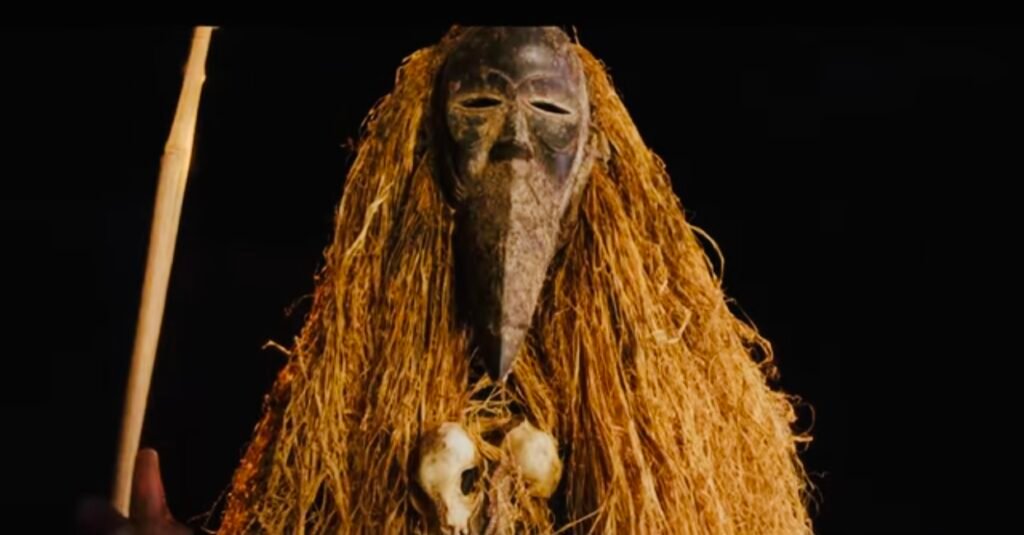
Image Source: Auntie Ama Visuals on Youtube
Multiple award-winning Ghanaian musician Kofi Kinaata has once again showcased his deep connection to African roots with the release of the music video for his single “Auntie Ama,” off his debut EP, KofiOOKofi. The visuals are a celebration of Africanism, richly portraying elements of traditional medicine, African beliefs, custumes, indigenous instruments, and authentic settings. Here is a breakdown of some of the Africanism at play in his visuals.
The first striking element of Africanism in the “Auntie Ama” video is the focus on traditional African food and cooking tools. At the beginning of the video, Kofi Kinaata’s mother is seen using a mortar and pestle to pound an unknown food substance. The mortar and pestle are symbolic of African culinary practices that date back to ancient times. This tool is also tied to African folklore, such as the story of the old woman who struck God with her long pestle, causing Him to move to His current place in the heavens.
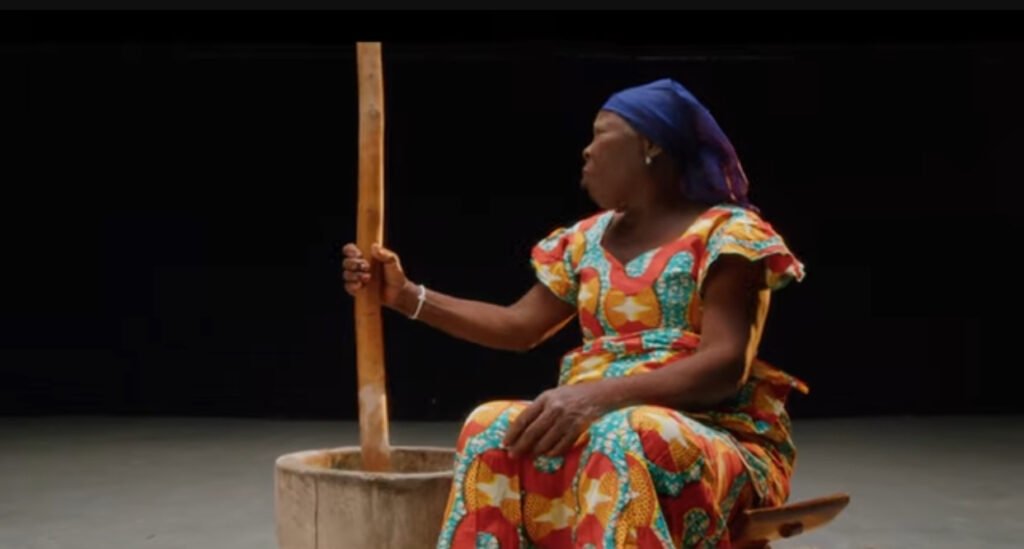
The video also features the preparation of banku, a traditional Ghanaian dish beloved by many. Kofi Kinaata’s mother is shown in the early stages of making banku, carefully mixing corn dough with cassava dough and gradually stirring the mixture over the fire. This scene highlights Ghana’s culinary heritage of Ghana.
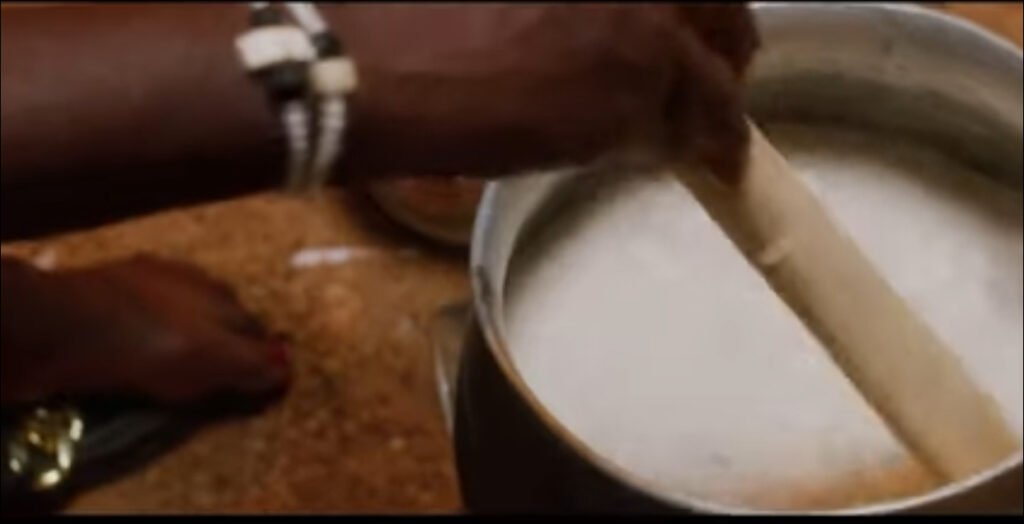
The video also touches on the Akan belief in the spirit of the dead, commonly referred to as “Amokye.” This spiritual figure is depicted by Babs Direction as a man dressed in African masquerade attire, wearing a mask, and wielding a trademark sword. In the video, Amokye is shown hunting for Kofi’s life after he is nearly beaten to death, with Kofi’s spirit appearing in the spiritual realm. This portrayal reflects the cultural and spiritual beliefs of the Akan people of Ghana, who hold that after death, humans return to the spiritual world from which they originally came before being born.
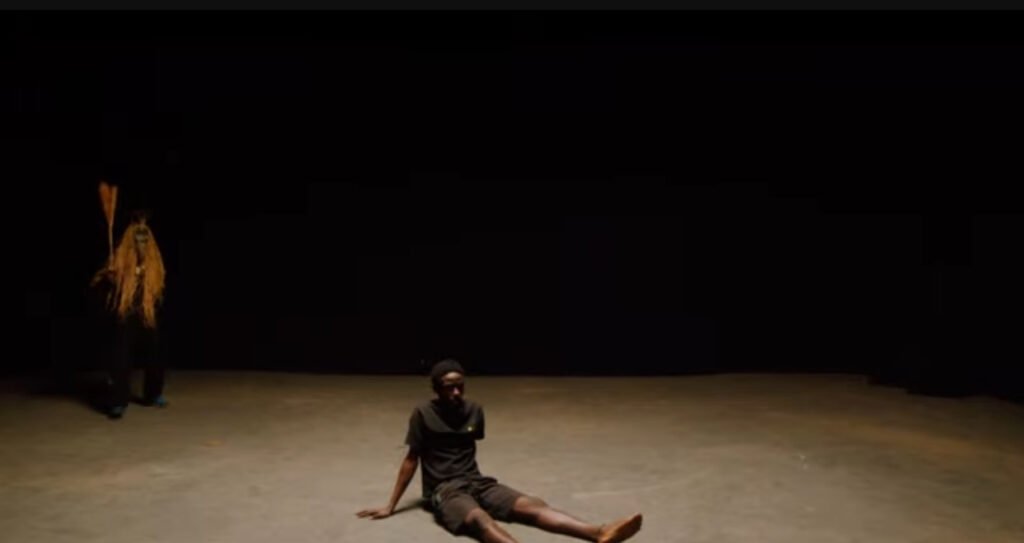
Having already discussed ‘Amokye,’ let me delve into that particular scene. In African belief, it is thought that the spirit fights to return to life after an untimely death. In the video, ‘Amokye’ is seen chasing Kofi’s soul but is unable to capture it, allowing Kofi to return to the physical world after African medicine is applied. If Amokye had succeeded in capturing Kofi’s soul, he would not have been able to return to life, even with the application of the medicine. This aligns with the Akan adage, “Owu kitsa adze a nkwa nntum nngye,” meaning “when death is in possession, life is powerless.”
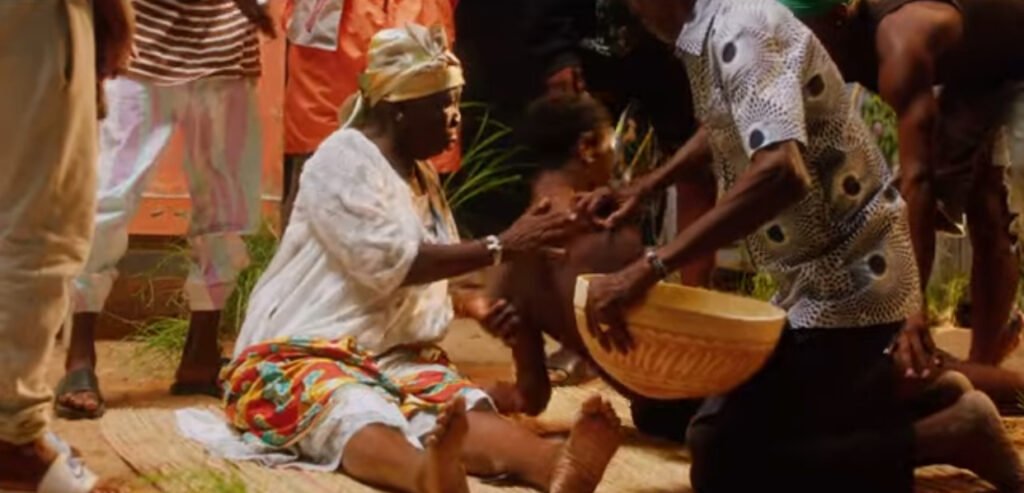
Now, let’s discuss the African belief in traditional medicine. This is first evident when Kofi’s nearly lifeless body is carried by his colleagues to his mother. A spoon is placed between his upper and lower jaws, based on the belief that if someone in such a state is unable to prevent their upper and lower teeth from meeting, they will die. The spoon is used to keep Kofi’s mouth slightly open, helping to prevent his death.
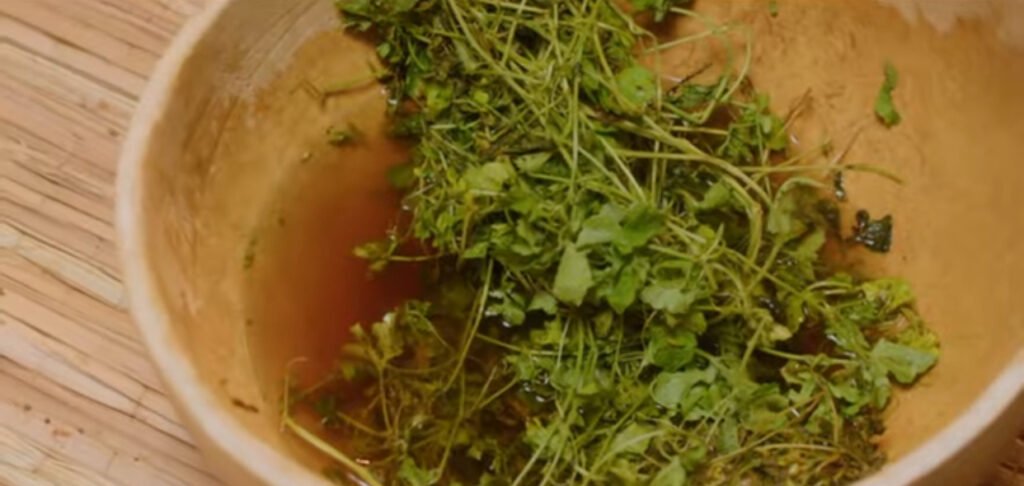
The video also highlights the use of traditional African herbs for medicinal purposes. After Kofi falls unconscious, a calabash filled with herbs is shown being applied to him. The application of these herbs, which leads to Kofi’s revival, reflects the African belief in the healing power of herbal medicine.
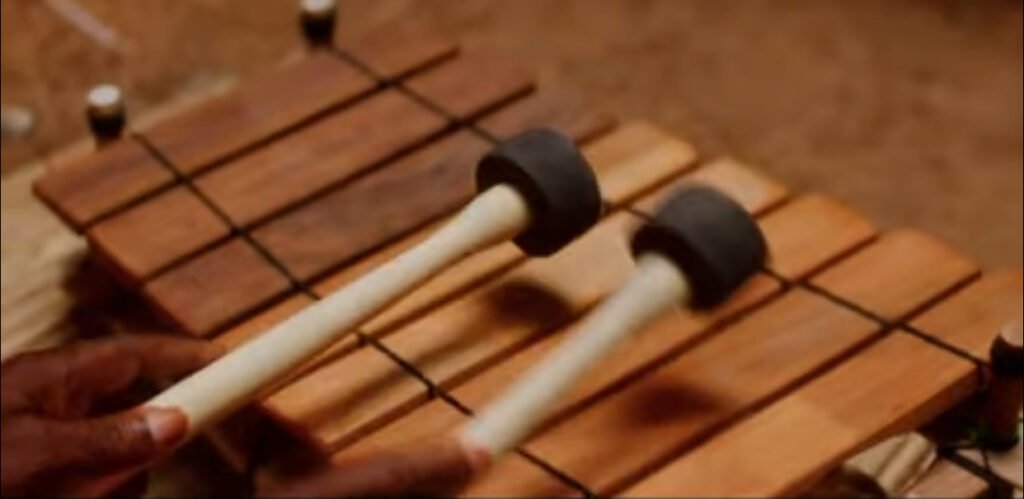
Returning to the video, it prominently features a variety of African musical instruments. Instruments such as the xylophone, kora, dun duns (dondo), akoteng, maracas, and thumb bells (afrekyewa) are showcased. These instruments contribute to the creation of rhythmic African melodies.

The video also highlights a variety of African costumes. Kofi Kinaata himself wears a Batakari (Fugu), a traditional garment from Northern Ghana. The performers are also dressed in colorful African prints, and the video includes Sleete and Kaba, a popular Akan outfit. The masquerade costume worn by ‘Amokye’ represents African fetishism, adding to the display of traditional attire and cultural richness.
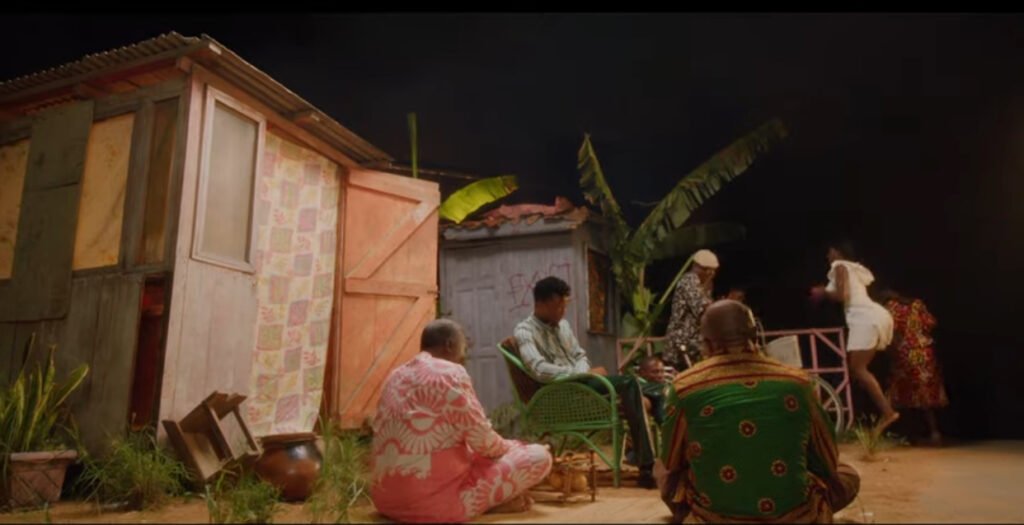
African games are also featured in the visuals. The video includes scenes of modern and Western games, such as a video game and playing cards used in gambling that nearly endangers Kofi’s life. However, it also highlights traditional African games, with two girls playing ‘Ampe,’ showcasing a blend of contemporary and traditional cultural elements.
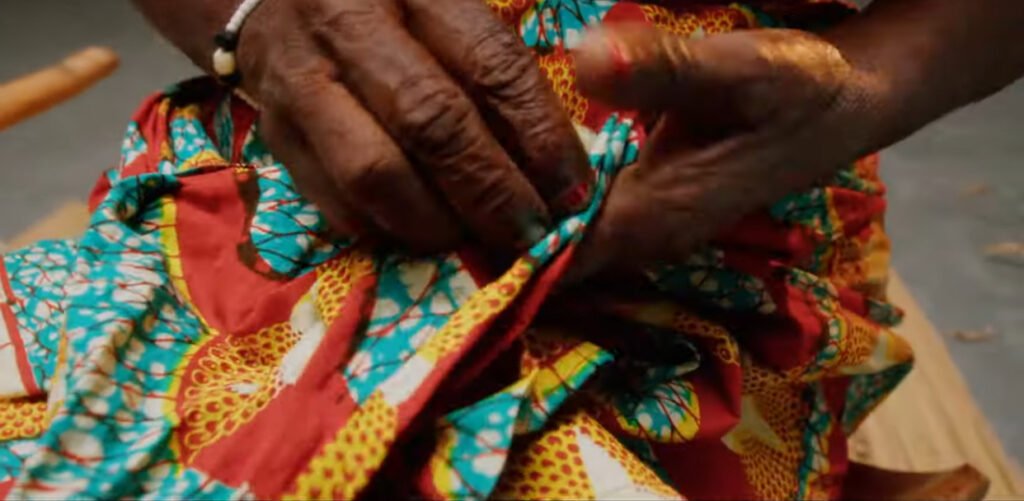
The video also features the concept of the ‘African bank,’ a practice where African mothers save money by tying it in their traditional cloth. This is shown when Kofi’s mother gives him money, tied in her African print cloth, to purchase something for her. This scene highlights a common and culturally significant method of saving and managing money within African communities.
The song is a tribute from Kofi’s mother, urging him to live a good life and achieve success while she, Auntie Ama, is still alive, to avoid regret after her passing. The visuals, combined with the rhythm of the song, powerfully convey this message. You can watch the video on YouTube.
Author: Ebenezer Kobinah Offen
Editor: Ama Gyesiwaa Quansah





